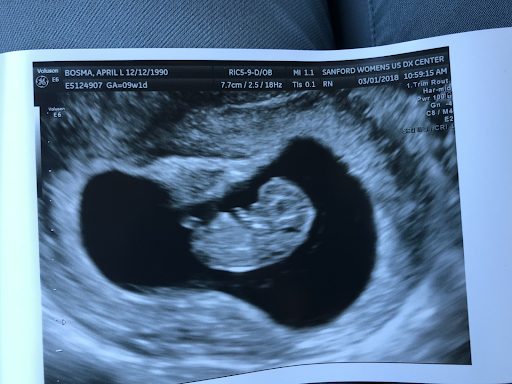Pregnancy is a journey filled with numerous milestones and exciting moments. One of these pivotal milestones is the ultrasound, a medical imaging technique that allows expectant parents to catch a glimpse of their developing baby. Two significant ultrasounds are typically performed during the early stages of pregnancy: the 7-week ultrasounds. In this article, we will explore what to expect during these ultrasounds and why they are important while keeping the information generic and non-promotional.
The Purpose of Early Ultrasounds
Early ultrasounds are essential for several reasons, as they provide crucial insights into the progress of your pregnancy. These scans offer valuable information about the following:
Confirming Pregnancy: The first ultrasound, usually around 7 weeks, confirms your pregnancy by visualizing the presence of an embryo within the uterus. It helps verify that the pregnancy is intrauterine, reducing the risk of an ectopic pregnancy (when the embryo implants outside the uterus).
Measuring Gestational Age: One of the primary purposes of these early ultrasounds is to determine the gestational age of the embryo. This helps healthcare providers estimate your due date more accurately.
Detecting Multiples: Early ultrasounds can also identify whether you are expecting twins or more. Multiple pregnancies often require specialised care and monitoring.
Checking Viability: The 7-week ultrasound assesses the viability of the pregnancy. A visible heartbeat is a significant indicator of a healthy pregnancy. However, it’s important to remember that in some cases, a heartbeat may not be detected at this stage, and further monitoring might be necessary.
The 7-Week Ultrasound
Around the 7-week mark, you will have your first ultrasound appointment. Here’s what you can expect:
Transvaginal Ultrasound: At this stage, a transvaginal ultrasound is often used, as it provides clearer images of the tiny embryo. A lubricated wand-shaped device is inserted into the vagina to capture images.
Gestational Sac and Yolk Sac: The 7-week ultrasound will reveal the gestational sac, a fluid-filled structure that surrounds the embryo. You may also see the yolk sac, which is the early source of nourishment for the developing embryo.
Embryo Development: It’s during this ultrasound that you may catch a glimpse of your baby’s tiny body and developing features. However, it’s important to note that at 7 weeks, the embryo is still quite small, typically measuring around 5-9 millimeters.
Detecting a Heartbeat: The presence of a heartbeat is a significant milestone. However, it’s not always detectable at 7 weeks. If it is not yet visible, your healthcare provider may schedule a follow-up ultrasound in a week or two.
The 8-Week Ultrasound
Around 8 weeks, you’ll have your second ultrasound, which offers further insights into the progress of your pregnancy:
Improved Visualization: The 8-week ultrasound typically offers better visualisation of the embryo and its development. The fetus is still quite small, but you may be able to see more distinct features.
Heartbeat Confirmation: By this stage, the heartbeat is usually visible and can be a reassuring sign of a healthy pregnancy. The heart rate can vary but often falls within the range of 140 to 170 beats per minute.
Early Organ Development: Although it’s still early in the pregnancy, some basic organ structures will begin to form during the 8th week. However, it’s essential to understand that full organ development occurs over the course of the entire pregnancy.
Confirming Due Date: The 8-week ultrasound helps healthcare providers establish a more accurate due date, which is important for monitoring the progress of your pregnancy.
Viability Check: Just like in the 7-week ultrasound, your healthcare provider will continue to monitor the viability of the pregnancy at the 8-week ultrasound.
Conclusion
In summary, early ultrasounds, specifically the 7-week ultrasounds, play a vital role in monitoring the health and progress of your pregnancy. These ultrasounds confirm the presence of an intrauterine pregnancy, determine gestational age, and, in the case of the 8-week scan, provide an opportunity to see and hear the baby’s heartbeat. They also help in identifying potential complications early on. However, it’s important to remember that the primary purpose of these ultrasounds is medical assessment rather than entertainment or gender determination, as that information is often not yet available at this stage.







